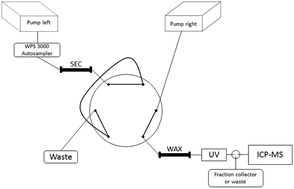Characterization of mercury-containing protein in human plasma†
Abstract
Characterization of mercury binding

- This article is part of the themed collection: Metallomics in China
* Corresponding authors
a
State Key Laboratory of Environmental Chemistry and Ecotoxicology, Research Centre for Eco-Environmental Sciences, Chinese Academy of Sciences, P.O. Box 2871, Beijing 100085, China
E-mail:
bhe@rcees.ac.cn
Fax: +86-10-62849339
Characterization of mercury binding

 Please wait while we load your content...
Something went wrong. Try again?
Please wait while we load your content...
Something went wrong. Try again?
 Fetching data from CrossRef.
Fetching data from CrossRef.
This may take some time to load.
Loading related content
